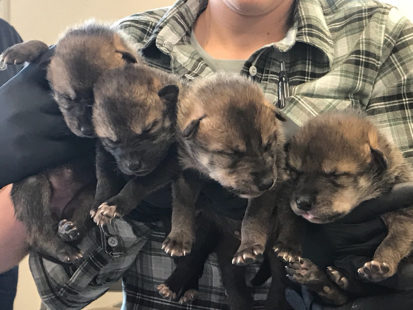Grazing and Livestock
-
The Catron County fearmongers are at it again, complaining to the State Land Commissioner of New Mexico that the U.S. Fish and Wildlife Service’s cross-fostering of wolf pups somehow puts residents at risk and, “jeopardizes the lives” of New Mexicans. Representative Yvette Herrell cried wolf to New Mexico State Land Commissioner in early May, 2020…
-
Mount Jefferson in Alta Toquima Wilderness, Humboldt Toiyabe NF, Nevada. Photo George Wuerthner The Humboldt Toiyabe National Forest (HTNF), primarily in Nevada, has 40 vacant allotments. Vacant allotments mean they once were grazed, but for various reasons currently do not have any livestock grazing. Rather than permanently closing allotments that are currently ungrazed, the Forest…
-
Deep pools in Jack Creek on the Antelope Grazing Allotment is prime Oregon spotted frog habitat. Photo George Wuerthner It is not every day that one can claim success in fighting public land degradation from domestic livestock. But the Fremont Winema National Forest in Oregon finally responded to conservationists’ concerns (and lawsuits) about the…
-
Hoback Peak in the Wyoming Range, Bridger Teton NF, Wyoming. Photo George Wuerthner A recent proposal by the Bridger Teton National Forest threatens the ability to retire grazing allotments on public lands through permit buyout. Grazing on public lands is a privilege, not a right. Nevertheless, the political power of the livestock industry makes it…
-
When a rancher claims to have lost livestock due to Mexican wolf predation, there are several ways that they can seek compensation. One of those ways is a program run by the U.S.D.A Farm Services Agency (FSA) known as the Livestock Indemnity Program (LIP), which provides compensation for livestock lost due to attack by animals…
-
Dairy and beef cattle are grazed at Point Reyes National Seashore sixty years after the properties were purchased by American citizens. Photo George Wuerthner Fences. Everywhere I went during a recent trip to Point Reyes, I encountered fences. Why are there fences in a national park unit? They exist to facilitate the private use of…
-
The Centennial Range straddles the Montana-Idaho border forming a natural migration corridor for wildlife. Photo George Wuerthner Due to a recent court decision, the Centennial Range, which lies along the Idaho-Montana border to the west of Yellowstone National Park, is that much closer to becoming a “safe zone” for wildlife. For decades, the U.S. Department…
-
Concentrations of elk by artificial feeding at Wyoming Feedgrounds is spreading diseases like Chronic Wasting Disease. Photo George Wuerthner Wyoming Fish and Game Department has 22 elk feed grounds scattered around the western part of the state and feeds as many as 17,000 elk every winter. The agency currently has eight of its 22…

